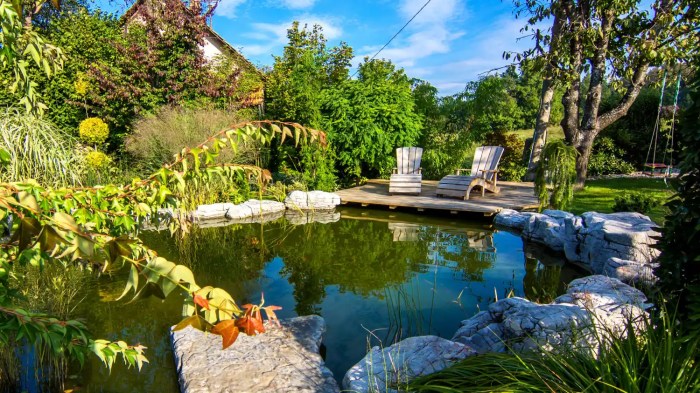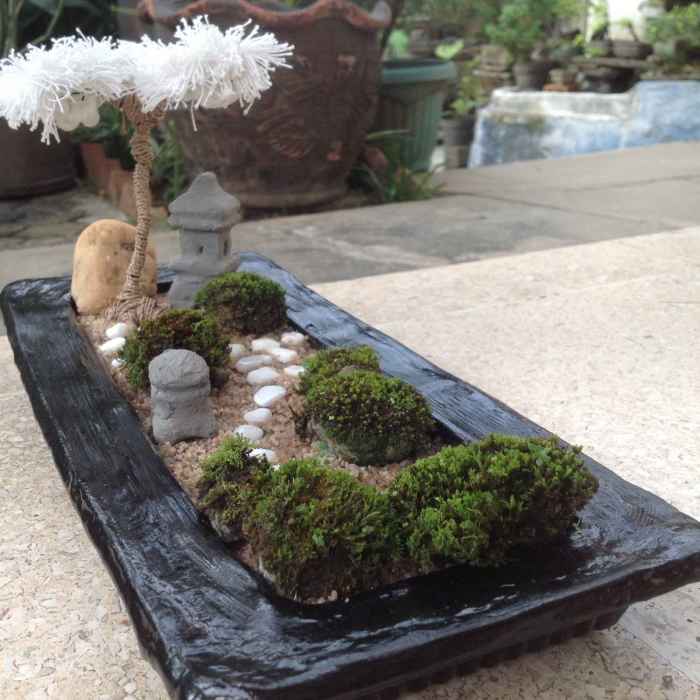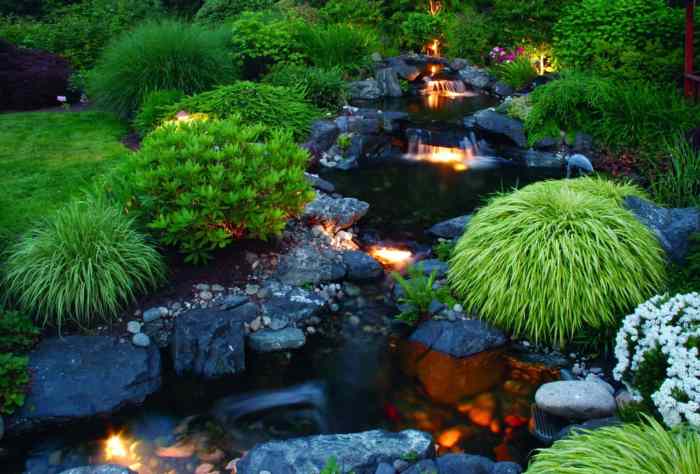Welcome to the world of Zen Garden Retreat: Creating Tranquility in Your Home. In this blog, we will delve into the art of designing a serene and harmonious space inspired by the principles of Zen Buddhism. Get ready to transform your home into a sanctuary of peace and tranquility.
As we explore the elements of a Zen garden retreat, we’ll discover how to create a calming atmosphere, incorporate natural elements, and maintain your tranquil oasis over time. Let’s embark on a journey towards inner peace and well-being.
Elements of a Zen Garden Retreat
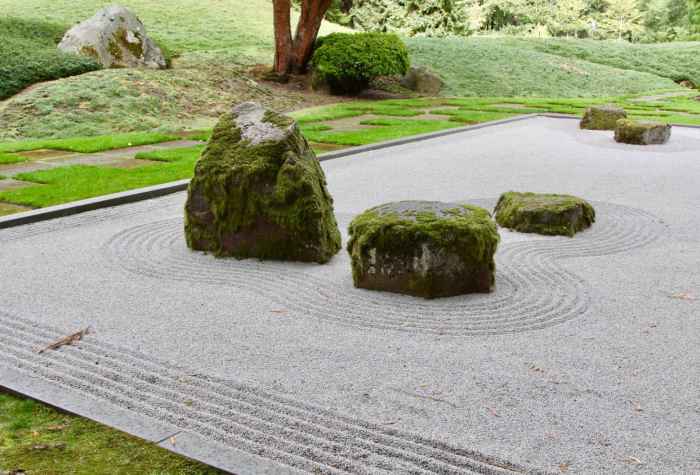
Zen garden retreats are designed to create a tranquil and peaceful space within your home. They incorporate natural materials, simplicity, and tranquility to promote relaxation and meditation. Here are the essential elements of a Zen garden retreat:
Natural Materials:Zen gardens use natural materials like wood, stone, bamboo, and water to create a sense of connection with nature. These materials bring the outdoors in and promote a sense of peace and serenity.
Rocks
Rocks are a common feature in Zen gardens. They represent stability, strength, and permanence. Rocks can be placed in various arrangements to create different effects. For example, a single large rock can be placed in the center of the garden to create a focal point, while smaller rocks can be scattered around to represent a river or mountain range.
Water Features
Water features, such as ponds, fountains, or waterfalls, add a sense of tranquility and movement to Zen gardens. The sound of flowing water can help to create a calming and meditative atmosphere. Water features can also attract wildlife, such as birds and frogs, which can add to the overall ambiance of the garden.
Plants
Plants are an essential element of Zen gardens. They bring life and color to the space and can help to create a sense of harmony and balance. Plants that are commonly used in Zen gardens include bamboo, Japanese maple, and pine trees.
Each element in a Zen garden retreat plays a significant role in creating a sense of peace and harmony. By incorporating these elements into your home, you can create a tranquil and meditative space where you can relax and de-stress.
Creating a Serene Atmosphere
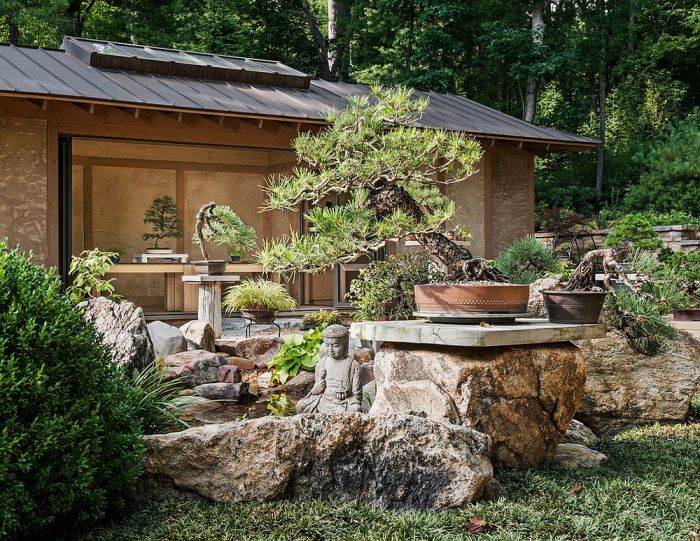
To create a truly serene atmosphere in your Zen garden retreat, it is important to consider all aspects of the environment, from the colors and sounds to the elements of nature. By carefully selecting each element and incorporating them in a harmonious way, you can create a space that is both calming and inspiring.
One of the most important elements to consider is color. Calming colors, such as blues, greens, and whites, can help to create a sense of peace and tranquility. Avoid using bright or harsh colors, as these can be distracting and stimulating.
Natural light is also essential for creating a serene atmosphere. Open up windows and doors to let in the sunlight, or use sheer curtains to diffuse the light. Soft sounds, such as the sound of water or wind chimes, can also help to create a relaxing environment.
Incorporating Elements of Nature
Elements of nature, such as plants, water, and wind chimes, can help to enhance the tranquility of your Zen garden retreat. Plants can help to purify the air and create a sense of connection to the natural world. Water features, such as fountains or ponds, can add a sense of movement and tranquility to the space.
Wind chimes can create a gentle and calming sound that can help to relax the mind and body.
Minimizing Distractions
To create a space for relaxation and reflection, it is important to minimize distractions. This means avoiding clutter and unnecessary noise. Keep the space clean and organized, and remove any items that are not essential to the retreat. You may also want to consider creating a dedicated space for meditation or yoga, where you can go to escape the hustle and bustle of everyday life.
Designing a Tranquil Space: Zen Garden Retreat: Creating Tranquility In Your Home
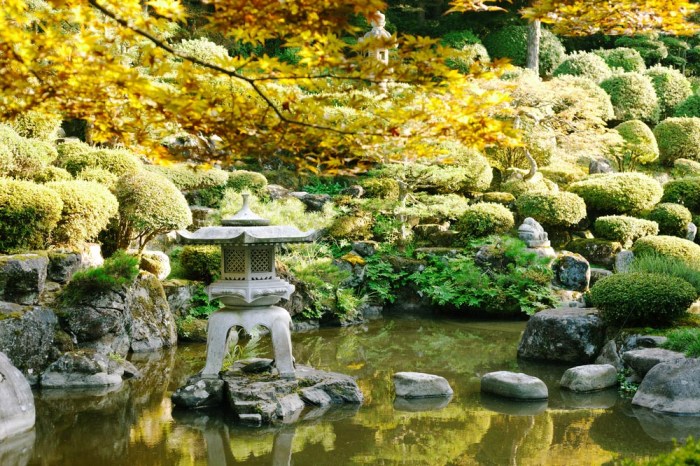
Creating a tranquil space in your home is essential for fostering relaxation and well-being. By incorporating Zen principles into your design, you can transform any room into a serene oasis.
One key aspect of designing a tranquil space is to focus on simplicity and asymmetry. This means avoiding clutter and unnecessary distractions, and instead opting for a minimalist aesthetic. Curved lines and natural materials, such as wood and stone, can also help to create a sense of calm and serenity.
Design Principles, Elements, Benefits, and Examples
| Design Principles | Elements | Benefits | Examples |
|---|---|---|---|
| Simplicity | Decluttered space, natural materials | Reduced stress, increased focus | Stone paths, bamboo fences |
| Asymmetry | Curved lines, uneven arrangements | Promotes relaxation, encourages creativity | Asymmetrical furniture placement, winding walkways |
| Natural Materials | Wood, stone, water | Connects with nature, promotes grounding | Wooden floors, stone walls, water features |
| Soft Lighting | Dimmers, natural light | Creates a calming atmosphere, reduces eye strain | Filtered sunlight, candlelight |
Incorporating Natural Elements

Incorporating natural elements into your Zen garden retreat is crucial for creating a sense of connection with nature and promoting tranquility. These elements, such as rocks, water, plants, and wind, bring the outdoors in, creating a serene and calming atmosphere.
Natural materials, such as stone, wood, and bamboo, add warmth and texture to the space. They also have a grounding effect, helping to connect you to the earth and the present moment.
Rocks
- Rocks provide a sense of stability and permanence in the garden. They can be used to create pathways, borders, or focal points.
- Different types of rocks, such as granite, limestone, and sandstone, have unique textures and colors that can add visual interest to the garden.
- Rocks can also be used to create a sense of movement and flow in the garden. By placing rocks in different sizes and shapes, you can create a winding path that invites visitors to explore the space.
Maintaining a Zen Garden Retreat
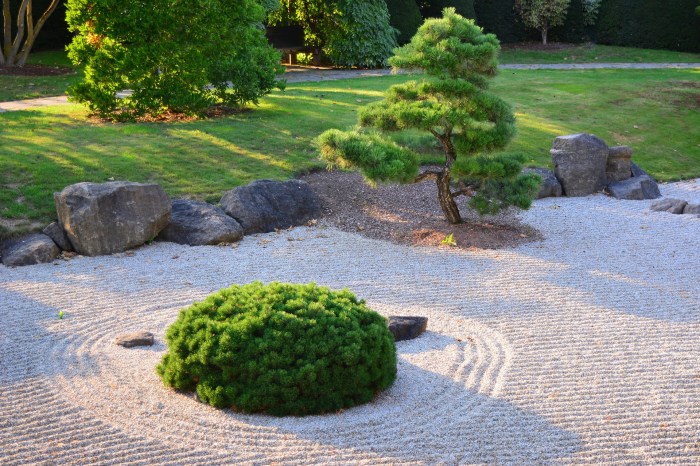
To ensure the longevity and tranquility of your Zen garden retreat, regular maintenance is essential. This includes cleaning, pruning, and general upkeep, as well as preserving the natural elements and maintaining a sense of serenity over time.
Regular Cleaning and Upkeep
Regular cleaning is crucial to prevent debris and dirt from accumulating, which can disrupt the serene atmosphere. Use a broom or rake to remove fallen leaves, twigs, and other debris. Clean water features regularly to prevent algae buildup and maintain their clarity.
Additionally, periodically inspect and repair any structures or pathways to ensure safety and aesthetics.
Pruning and Plant Care
Proper pruning techniques promote plant health and maintain the desired shape and size. Prune trees and shrubs regularly to remove dead or overgrown branches, encourage new growth, and enhance their aesthetic appeal. Water plants as needed, especially during dry spells, and fertilize them occasionally to ensure their vitality.
Preserving Natural Elements, Zen Garden Retreat: Creating Tranquility in Your Home
The natural elements in a Zen garden retreat are essential for creating a sense of tranquility. Protect trees and plants from pests and diseases by using organic methods whenever possible. Encourage beneficial insects and wildlife by providing a water source and native plants.
Avoid using harsh chemicals or pesticides that can harm the ecosystem.
Maintaining Tranquility and Serenity
Over time, it’s essential to maintain the sense of tranquility and serenity that a Zen garden retreat offers. Avoid introducing excessive noise or distractions into the space. Encourage visitors to respect the peaceful atmosphere and practice mindfulness while exploring the retreat.
Consider incorporating meditation or yoga practices into your routine to enhance the overall experience of serenity.
Ultimate Conclusion
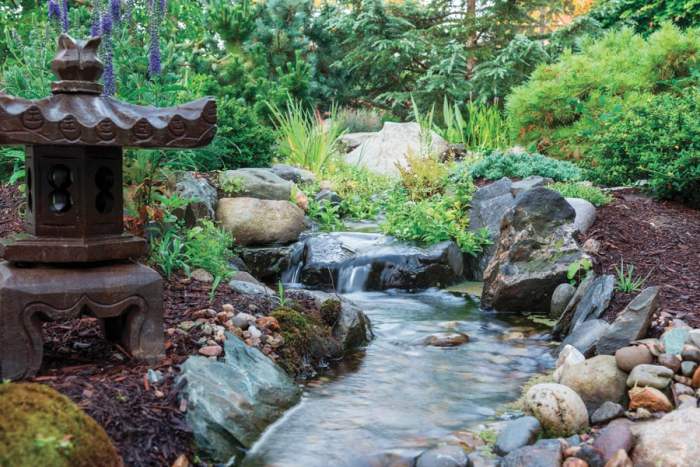
Creating a Zen garden retreat is not just about aesthetics; it’s about fostering a connection with nature, promoting relaxation, and cultivating a sense of inner tranquility. By following the principles Artikeld in this blog, you can transform your home into a sanctuary where you can escape the hustle and bustle of daily life and find moments of peace and rejuvenation.
Answers to Common Questions
What are the key elements of a Zen garden retreat?
Natural materials, simplicity, tranquility, rocks, water features, plants, peace, harmony.
How can I create a serene atmosphere in my Zen garden retreat?
Calming colors, natural light, soft sounds, nature elements (plants, water, wind chimes), minimize distractions, relaxation, reflection.
What are the benefits of incorporating natural elements into my Zen garden retreat?
Connection with nature, tranquility, natural materials, overall atmosphere, stress reduction, increased focus.
